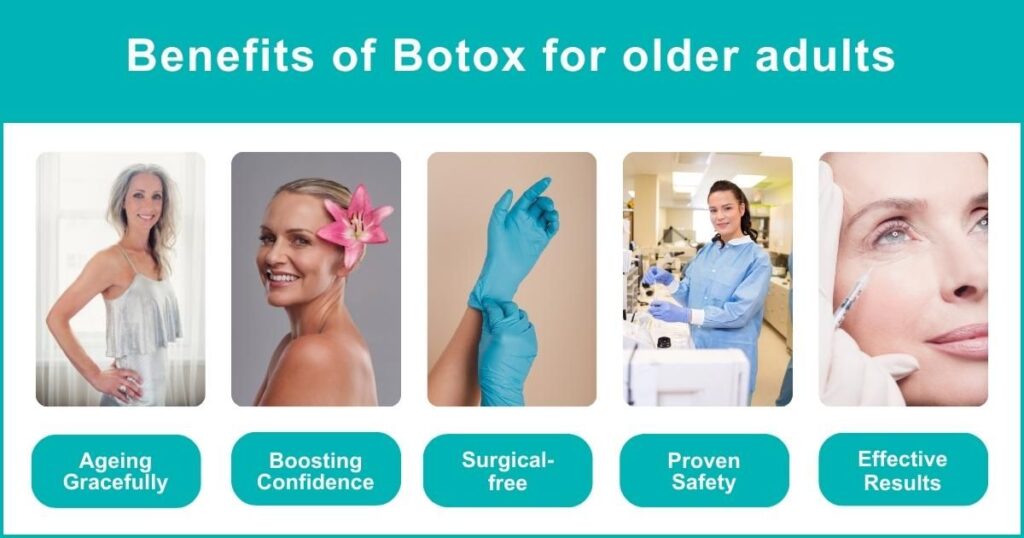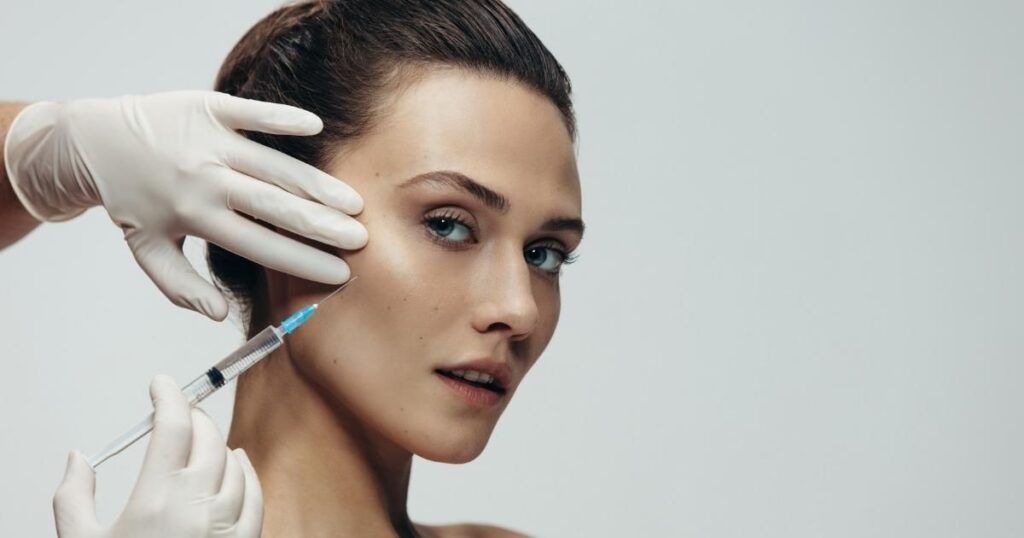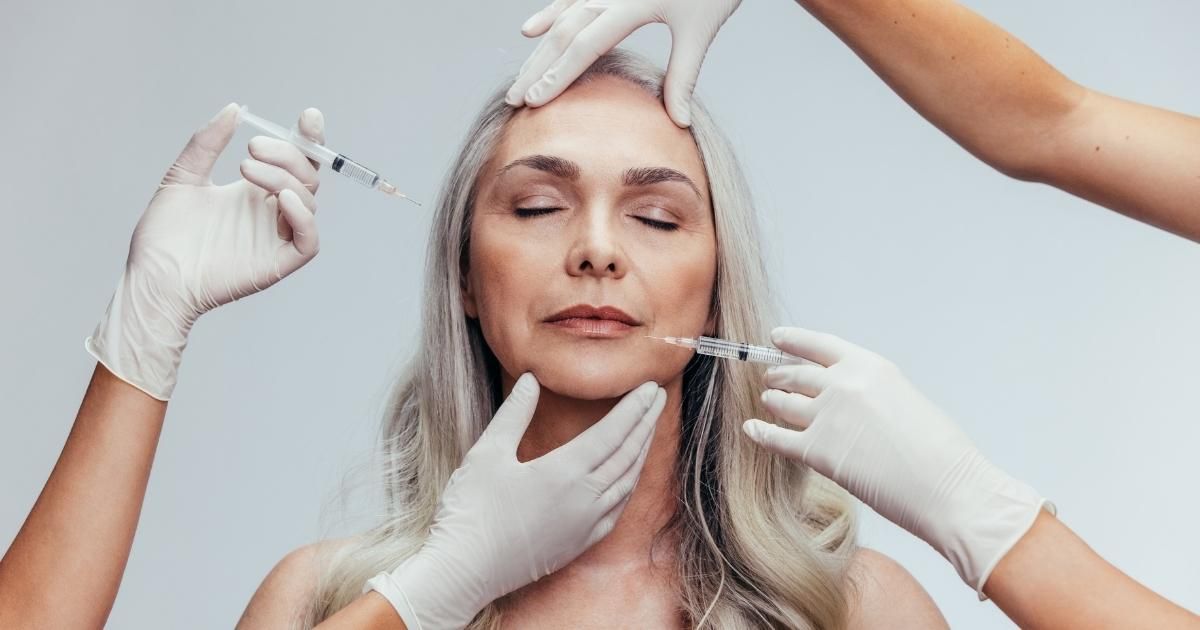Although getting older is inevitable, many still try to stop the clock on their appearance.
A popular choice for combating the visible signs of ageing is Botox. Are you considering Botox in your 50s, 60s, and beyond? Then this article is for you.
This article explains everything you need to know about this intriguing cosmetic treatment.
According to the British Association of Aesthetic Plastic Surgeons, non-surgical treatments like Botox saw a 102% increase in 2022, highlighting its popularity among the ageing population.
How Does Botox Work?
Botox is a purified form of botulinum toxin, a neurotoxic protein. In the medical and cosmetic industries, it is widely used to reduce wrinkle appearances by relaxing muscles.
Book A Consultation With Dr Tarek Bayazid
Top-rated Plastic Surgeon For Botox in Dubai
Installment Plan Available
| Stage | Descripti.
on |
| Injection | Botox is directly injected into the muscle. |
| Blockage | It blocks nerve signals in the muscle. |
| Relaxation | The muscle relaxes, reducing the wrinkle. |
Is Botox Safe for Older Adults?

Yes, Botox is generally safe for older adults. The Food and Drug Administration (FDA) has conducted extensive testing and authorised its cosmetic use. There are a variety of reasons to contemplate Botox in your 50s, 60s, and beyond:
- Ageing Gracefully: A youthful appearance can be achieved with Botox by softening wrinkles and fine lines naturally occurring as we age.
- Boosting Confidence: Ageing can affect self-esteem. Botox might provide a confidence boost, assisting people to feel more comfortable and vibrant in their skin.
- Surgical-free: Botox is an entirely nonsurgical procedure. Anyone who wants to enhance their appearance without surgery can benefit from this procedure.
- Proven Safety: Food and Drug Administration approval has made Botox a safe option for cosmetic use.
- Effective Results: Botox has been proven to deliver effective results in reducing the appearance of wrinkles and age-related lines.
Does Botox Work Differently in Your 50s, 60s and Beyond?
Indeed, Botox does work differently as we age. The skin’s elasticity and thickness decrease over time, which can affect the absorption and effect of Botox. However, it can still effectively reduce the appearance of wrinkles and fine lines.
| Age Group | Botox Usage | Results | Duration |
| In Your 50s | Often used to treat moderate to severe facial lines and wrinkles. | Botox can still deliver effective results, reducing the appearance of wrinkles and offering a more youthful look. | The results usually last 3-6 months; regular treatments may be necessary to maintain the effect. |
| In Your 60s | Typically used for deeper wrinkles and lines, which become more pronounced with age. | The results can be noticeable but might be less dramatic due to the depth and severity of wrinkles. | The effect might be shorter, with top-ups required every 3-4 months. |
| Beyond the 60s | Mainly used to manage very pronounced wrinkles. Additional treatments like fillers might be considered in conjunction. | While still effective, the results might be subtler due to the natural skin elasticity and collagen loss. | Frequent sessions might be required, possibly every 2-3 months. |
Botox Side Effects: What are they?
While Botox is generally safe, side effects can occur. These may include temporary bruising, headache, and droopy eyelids.
| Side Effect | Description |
| Temporary bruising | Small, often unnoticeable, bruises at injection sites. |
| Headache | It can occur immediately after treatment but usually resolves within 24-48 hours. |
| Droopy eyelids | A rare side effect, often resulting from improper injection technique. |
How Often Should You Get Botox in Your 50s?

It depends on an individual’s age, the type of skin, and the desired effect as to how frequently Botox is administered. However, most people need treatments every 3-6 months to maintain results.
| Factors | Age: 50s | Age: 60s | Age: Beyond 60s |
| Normal Skin Type/Desired Moderate Look | Every 4-6 months | Every 3-4 months | Every 2-3 months |
| Normal Skin Type/Desired Dramatic Look | Every 3-4 months | Every 2-3 months | Every 2 months |
| Dry Skin Type/Desired Moderate Look | Every 3-4 months | Every 3 months | Every 2 months |
| Dry Skin Type/Desired Dramatic Look | Every 2-3 months | Every 2 months | Every 1-2 months |
| Oily Skin Type/Desired Moderate Look | Every 4-6 months | Every 3-4 months | Every 2-3 months |
| Oily Skin Type/Desired Dramatic Look | Every 3-4 months | Every 2-3 months | Every 2 months |
Can Botox Be Combined with Other Anti-Ageing Treatments?
If you are interested in treating ageing with Botox, consider fillers, lasers, and skincare regimens along with it. The process should be performed with the guidance of a healthcare professional.
| Treatment | Combined Use with Botox |
| Fillers | Can be used together to address different types of wrinkles. |
| Lasers | Help improve skin texture and pigmentation alongside Botox. |
| Skincare Regimens | A good skincare regimen can support and prolong the effects of Botox. |
What Lifestyle Changes Can Support Botox Treatment?
Incorporating healthy lifestyle habits can enhance the effects of Botox and improve overall skin health. Diet, exercise, sleep, and sun protection all play a role.
| Lifestyle Changes | How It Supports Botox |
| Balanced Diet | Provides necessary nutrients for skin health. |
| Regular Exercise | Improves blood circulation, promoting skin health. |
| Good Sleep | Sleep allows for skin repair and rejuvenation. |
| Sun Protection | Sun damage can hasten skin ageing, counteracting Botox effects. |
What Should You Expect After Botox Treatment?
Following Botox treatment, there might be minor discomfort or bruising. Most people notice the full effects after 3-7 days, lasting for 3-6 months. Aftercare is crucial for optimal results.
| Post-Botox | Description |
| Immediate Aftercare | Avoid touching or rubbing the treated area for 24 hours. |
| Results | The total effect can be seen after 3-7 days. |
| Longevity | Effects last about 3-6 months, but this varies by individual. |
Botox in your 50s, 60s, and beyond can indeed be a game-changer in the journey of ageing gracefully. Knowledge is power, and understanding what to expect with Botox treatments lets you make informed decisions about your cosmetic care.
But remember, while maintaining a youthful appearance is rewarding, ageing is also a natural and beautiful process filled with wisdom and experiences that truly define our beauty.
Have you taken the first step towards anti-ageing? Don’t hesitate to contact the experienced professionals at Dr Tarek Bayazid. We are committed to delivering customised, safe, and effective anti-ageing solutions.
Our clinic offers a personalised approach to Botox treatments, combining state-of-the-art technology with a deep understanding of facial aesthetics to help you achieve natural-looking results that enhance your individual beauty.
Ready to embark on a journey towards ageless beauty? book a consultation today to discuss your goals and discover how Botox can help you look and feel your best, regardless of your age.











Related Posts